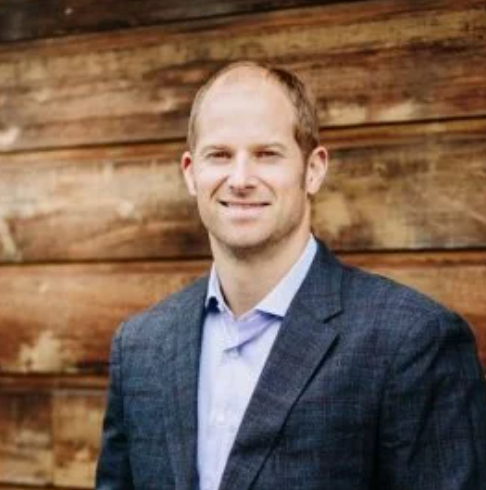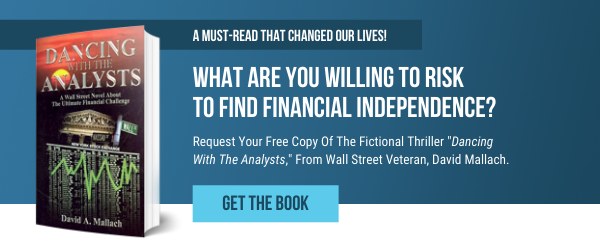You know how some people are always looking for the next diet fad? Keto versus Macro versus South Beach. That’ll make you lose weight; this will help you slim down. The same goes for fitness routines: this or that exercise will finally burn that stubborn fat and give you the sixpack of your dreams. Any strategy that is halfway sane, and that you don’t stop doing will probably work. If it's somewhat reasonable in terms of “calories in, calories out” the nature of the regimen doesn't matter. As long as you are consistent, you will get results. Same thing with going to the gym.
Not surprisingly the same rule applies to prospecting for new clients. The only way prospecting doesn't work is if you stop doing it. This brings me to our topic for today. I get asked frequently by advisors, how can we transition a social conversation to one that leans toward the financial side of the equation. Because there are a lot of people out there who really could use our help.
The problem: how to get to them? How to sift through all the nos to get to the yeses. I know that what we do, our brand of financial advising, is unique and doesn’t necessarily appeal to everyone. That said, I like to get our advisors to a level of consistency in terms of something they can authoritatively place in front of a prospective client – in order to legitimately help that person within the course of a ten-minute conversation. And to give advisors the confidence that if they do it over and over again, they will actually be able to get significant traction.
Let’s use the analogy of a casino. I’m not a gambler, but I do know that if you put a coin into a slot machine and pull the handle X number of times – for illustration sake, let’s say you put in a quarter and pull the handle 50,000 times, you’re guaranteed to hit the “big prize” (whatever that is, would a million be OK?). But how many people would do that? How many people would sit there and keep cranking that handle over and over and over again? So much would happen during that time. They may lose hope. They may get bored. They may get scared. They may wonder if they change their seat and try another machine, maybe things are better on the other side. And yet, the fact remains that this is a numbers game and if you pull that handle so many times, you will eventually get the result you seek.
Our business is no different. If you go out there and talk to thousands of people, intentionally, about what we do and how you can impact their lives, you will be able to build yourself a practice that will net you the “big prize.” The difference between the slot machine and live prospecting is that there is a negative feeling of being rejected by someone, which hurts quite a bit more than when the slot machine eats your coin and spits back nothing. At the slot machine, you may get desensitized to coming up empty. But as a financial advisor, I know how hard it is to hear the word “no” over and over.
All this led me to think, how can I create the financial equivalent of “pulling the handle” so that our advisors can actually work their muscles. It’s not about the weight, it’s about the reps. Also, it’s important that the ‘exercise’ actually add value to the prospect, so it’s not just a matter of going and talking to 50,000 random people about nothing. What I would like our advisors to do is to go and have a legitimate 10-minute “back of the napkin” financial planning conversation with everyone they meet. Let me share with you how this may go down in six easy steps.
Step 1: “How much money do you need a month?” Ask your prospect how much income they think they’ll need in the first twelve months of retirement above Social Security. Now there's a question, as simple as it is, that I've asked many people and they do not have an answer. Not a clue. So if you are struggling as an advisor in terms of not knowing what to ask your prospect, ask them this question. Stop making it so complicated for yourself. There is a sea of potential clients out there that can't answer this question with any degree of confidence. They haven't gone through (or maybe they’ve avoided) the process of sitting down and understanding of how much money is going out the door this month when they’re 50, let alone what that means for when they stop working at 62 or 65.
Step 2: Multiply the monthly about by 12 and get a yearly number.
Step 3: Capitalize that number by dividing it by 0.045, or essentially four and a half percent. So take that yearly number, divide by 0.045, and that's the amount of total capital the person will need in the first year of retirement.
Step 4: Ask them how much they’re currently saving monthly. In other words, what's going into retirement today.
Step 5: Ask them how much they have IN retirement savings at this time. This includes all accounts earmarked for retirement, such as 401(ks)s, Roth and regular IRAs, etc.
Step 6: At this point, the advisor can figure out a rate of return, net of inflation that tells the 50-year-old prospect who wants to retire at age 65, what their rate of return compounded over those 15 years needs to be in order to get to their “number.”
This is a conversation we don’t have often enough as financial advisors despite the tremendous need for it. It can be a very easy way to engage with folks, without ever mentioning our very specific philosophy around investing. Once we figure out what the client needs, we have proven ourselves tremendously valuable, and we have created an opening for a longer, more meaningful conversation.
The point is the conversation does not stop here. Now you can share with the prospect a hypothetical picture of the future. Flash forward, we've established a plan, we're investing the money for the client, and now the client is confident that they've got everything in place for a secure, comfortable retirement. The question is now, is the client, at age 65, or 70 or 75 positioned health-wise to enjoy all the comforts that their money can afford them.
This becomes a great way for us to articulate our value proposition in terms of educating clients about what they can do from a lifestyle standpoint so that they are not only financially fit in retirement, but also physically fit to be able to enjoy their hard-earned savings.
So you see, not everything that’s complex needs to be complicated to explain. As a financial advisor you can use a simple exercise like this retirement calculation on the back of a napkin, and make it the handle you crank a thousand times a year. Your business will thrive as a result of it.
Ben Beck is Managing Partner & Chief Investment Officer at Beck Bode, a deliberately different wealth management firm with a unique view on investing, business and life.

 Benjamin Beck, CFP®
Benjamin Beck, CFP®